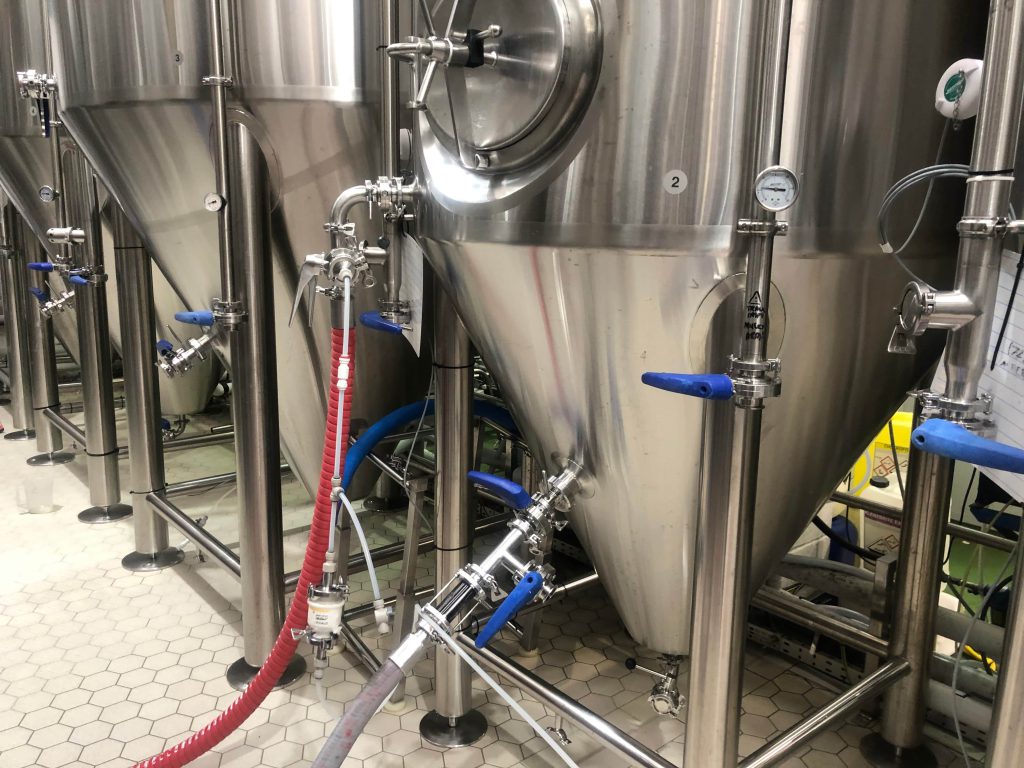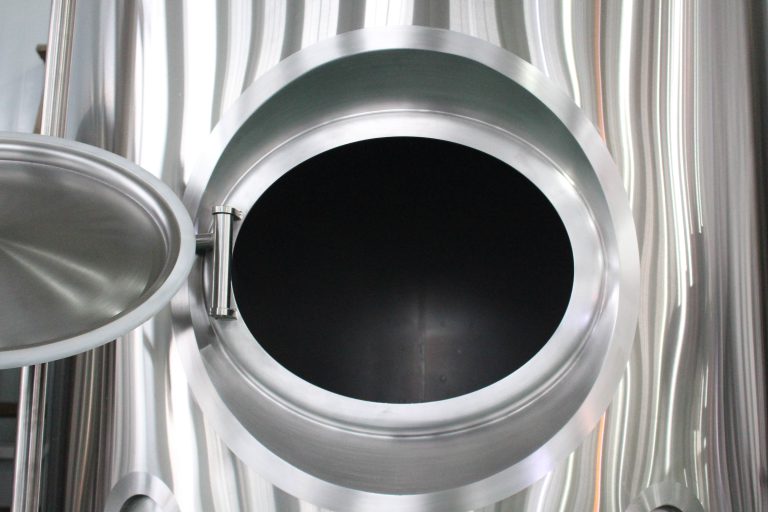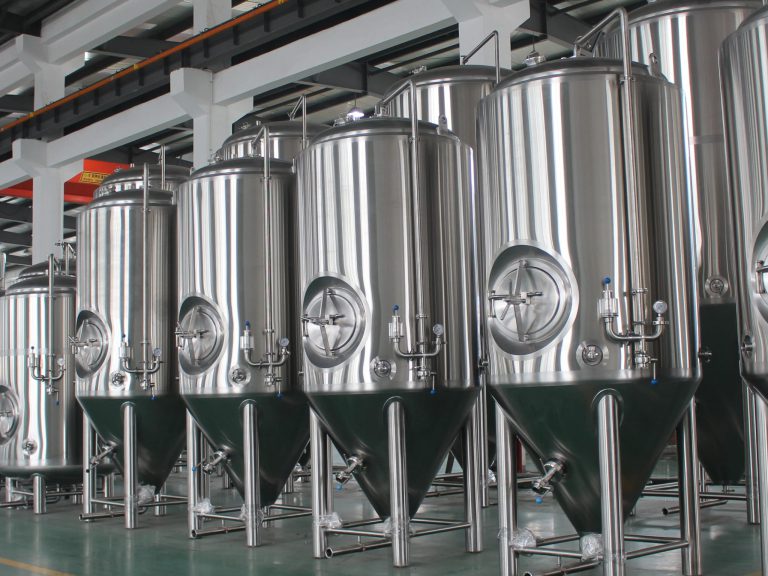introduzione

Nel mondo della produzione della birra, la scelta dell'attrezzatura può influenzare significativamente la qualità del prodotto finale. Tra le varie opzioni disponibili, il serbatoio di fermentazione in acciaio inossidabile è emerso come la scelta preferita sia per gli homebrewer che per i birrifici commerciali. Questo articolo esplorerà i numerosi vantaggi dell'utilizzo di un serbatoio di fermentazione in acciaio inossidabile, evidenziandone la durata, l'igiene e l'efficienza, e fornendo al contempo approfondimenti sul suo ruolo nel processo di produzione della birra.
Durabilità e longevità
Uno dei motivi più convincenti per scegliere un serbatoio di fermentazione in acciaio inossidabile è la sua durevolezza. A differenza di altri materiali, l'acciaio inossidabile è resistente alla corrosione e all'usura, assicurando che la tua attrezzatura possa sopportare i rigori della fermentazione a lungo termine.
Caratteristiche principali della durata
- Resistenza alla corrosione: L'acciaio inossidabile non arrugginisce, il che è fondamentale per preservare l'integrità del processo di produzione della birra.
- Resistenza all'impatto: Può resistere a urti e colpi senza ammaccarsi o rompersi.
- Tolleranza alla temperatura: L'acciaio inossidabile resiste sia alle alte temperature che alle basse temperature, il che lo rende versatile per diversi stili di preparazione della birra.
Confronto della durata dei materiali di fermentazione
| Materiale | Resistenza alla corrosione | Resistenza all'impatto | Tolleranza alla temperatura |
|---|---|---|---|
| Acciaio inossidabile | Eccellente | Eccellente | Alto e basso |
| Bicchiere | Povero | Povero | Limitato |
| Plastica | Moderare | Moderare | Limitato |
| Alluminio | Moderare | Bene | Moderare |
Igiene e pulizia
La sanificazione è fondamentale nella produzione della birra, poiché qualsiasi contaminazione può rovinare un lotto. Un serbatoio di fermentazione in acciaio inossidabile è facile da pulire e sanificare, riducendo il rischio di batteri indesiderati o lieviti selvatici.
Vantaggi della sanificazione in acciaio inossidabile
- Superficie liscia: La finitura liscia dell'acciaio inossidabile impedisce ai residui di aderire, facilitando la pulizia.
- Non poroso:A differenza di altri materiali, l'acciaio inossidabile non presenta pori che possano ospitare batteri.
- Compatibile con detergenti:L'acciaio inossidabile può resistere a vari prodotti chimici per la pulizia senza degradarsi.
Controllo della temperatura e isolamento
Un altro vantaggio dell'utilizzo di un serbatoio di fermentazione in acciaio inossidabile è la sua eccellente capacità di controllo della temperatura. Molti serbatoi in acciaio inossidabile sono progettati con isolamento per mantenere temperature ottimali durante la fermentazione.
Vantaggi del controllo della temperatura
- Fermentazione costante: Temperature stabili portano a risultati di fermentazione prevedibili, essenziali per il controllo di qualità.
- Efficienza energetica: I serbatoi isolati riducono l'energia necessaria per mantenere le temperature, abbassando i costi operativi.
Caratteristiche del controllo della temperatura
| Caratteristica | Descrizione |
|---|---|
| Strato isolante | Aiuta a mantenere la stabilità della temperatura |
| Integrazione termocoppia | Consente un monitoraggio preciso della temperatura |
| Elementi riscaldanti regolabili | Fornisce impostazioni di temperatura personalizzate |
Efficacia dei costi
Sebbene l'investimento iniziale in un serbatoio di fermentazione in acciaio inossidabile possa essere più elevato rispetto ad altri materiali, il risparmio a lungo termine spesso giustifica il costo.
Motivi dell'economicità
- Longevità:La durevolezza dell'acciaio inossidabile significa meno sostituzioni nel tempo.
- Manutenzione: Costi di manutenzione ridotti grazie alla resistenza all'usura e alla corrosione.
- Efficienza: Una migliore efficienza di fermentazione si traduce in rese migliori e sprechi ridotti.
Attrazione estetica
Oltre alla funzionalità, un serbatoio di fermentazione in acciaio inossidabile offre un fascino estetico che può migliorare l'aspetto visivo di un birrificio o di un impianto di homebrewing. L'aspetto elegante e moderno dell'acciaio inossidabile può essere un pezzo forte in qualsiasi ambiente di produzione di birra.
Benefici estetici
- Aspetto moderno: L'acciaio inossidabile ha un aspetto contemporaneo che si adatta bene a vari ambienti.
- Finiture personalizzate: Disponibile in varie finiture per abbinarsi al tuo spazio di preparazione.
Versatilità nella produzione della birra

La versatilità dei serbatoi di fermentazione in acciaio inossidabile consente di utilizzarli per vari tipi di processi di fermentazione, tra cui fermentazione, condizionamento e servizio.
Processi di produzione della birra che ne traggono beneficio
- Fermentazione: Ideale per la fermentazione primaria e secondaria.
- Condizionata: Perfetto per l'invecchiamento e lo sviluppo del sapore.
- Servire: Molti serbatoi sono predisposti per il servizio diretto, semplificando il processo.
Versatilità nelle applicazioni di produzione della birra
| Applicazione | Descrizione |
|---|---|
| Fermentazione | Fermentazione primaria e secondaria |
| Condizionata | Invecchiamento e miglioramento del sapore |
| Servire | Distribuzione diretta ai clienti |
Conclusione
Investire in un serbatoio di fermentazione in acciaio inossidabile è una decisione che può migliorare notevolmente la tua esperienza di produzione della birra, offrendo vantaggi in termini di durata, igiene, controllo della temperatura, economicità, appeal estetico e versatilità. Che tu sia un homebrewer o che gestisca un birrificio commerciale, i vantaggi dell'uso dell'acciaio inossidabile non possono essere sopravvalutati. Comprendendo questi vantaggi, puoi fare scelte consapevoli che contribuiranno alla qualità della tua birra e all'efficienza della tua attività.
FAQ
Che cosa è un serbatoio di fermentazione in acciaio inossidabile?
Un serbatoio di fermentazione in acciaio inossidabile è un contenitore specializzato utilizzato per la produzione della birra, progettato per garantire durata, igiene e un controllo efficiente della temperatura.
Come faccio a pulire il serbatoio di fermentazione in acciaio inossidabile?
La pulizia solitamente prevede il risciacquo con acqua calda, l'uso di detergenti non abrasivi e la disinfezione con prodotti chimici approvati.
Sono serbatoi di fermentazione in acciaio inossidabile costoso?
Sebbene possano avere un costo iniziale più elevato, i risparmi a lungo termine derivanti dalla durata e dalla manutenzione li rendono convenienti nel lungo periodo.
Posso usare un serbatoio di infusione in acciaio inossidabile per altre bevande?
Sì, i serbatoi di fermentazione in acciaio inossidabile sono versatili e possono essere utilizzati per fermentare altre bevande come sidro, idromele o kombucha.
Come faccio a mantenere il mio serbatoio di fermentazione in acciaio inossidabile?
Una pulizia e un'ispezione regolari per rilevare eventuali segni di usura o corrosione contribuiranno a mantenere le condizioni e la longevità del vostro serbatoio.

